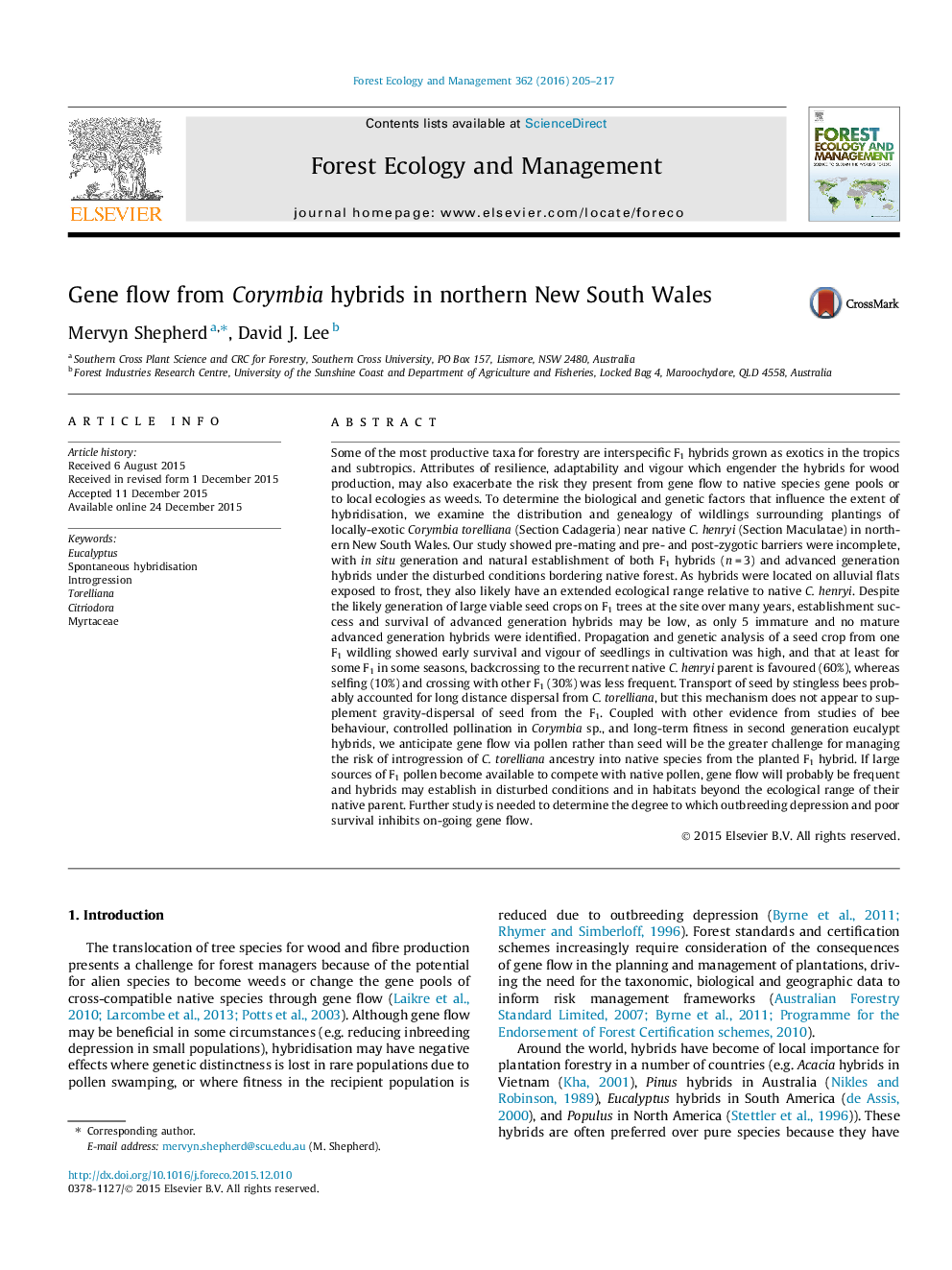| کد مقاله | کد نشریه | سال انتشار | مقاله انگلیسی | نسخه تمام متن |
|---|---|---|---|---|
| 85986 | 159155 | 2016 | 13 صفحه PDF | دانلود رایگان |
• Locally exotic Corymbia torelliana F1 spontaneously hybridise with native C. henryi.
• Hybrids show early vigour and establish in disturbed conditions near native forest.
• Long term viability of hybrids appears low.
• Enhanced seed dispersal from the F1 by stingless bees was not evident.
• Gene escape from the F1 is more likely via pollen than seed.
Some of the most productive taxa for forestry are interspecific F1 hybrids grown as exotics in the tropics and subtropics. Attributes of resilience, adaptability and vigour which engender the hybrids for wood production, may also exacerbate the risk they present from gene flow to native species gene pools or to local ecologies as weeds. To determine the biological and genetic factors that influence the extent of hybridisation, we examine the distribution and genealogy of wildlings surrounding plantings of locally-exotic Corymbia torelliana (Section Cadageria) near native C. henryi (Section Maculatae) in northern New South Wales. Our study showed pre-mating and pre- and post-zygotic barriers were incomplete, with in situ generation and natural establishment of both F1 hybrids (n = 3) and advanced generation hybrids under the disturbed conditions bordering native forest. As hybrids were located on alluvial flats exposed to frost, they also likely have an extended ecological range relative to native C. henryi. Despite the likely generation of large viable seed crops on F1 trees at the site over many years, establishment success and survival of advanced generation hybrids may be low, as only 5 immature and no mature advanced generation hybrids were identified. Propagation and genetic analysis of a seed crop from one F1 wildling showed early survival and vigour of seedlings in cultivation was high, and that at least for some F1 in some seasons, backcrossing to the recurrent native C. henryi parent is favoured (60%), whereas selfing (10%) and crossing with other F1 (30%) was less frequent. Transport of seed by stingless bees probably accounted for long distance dispersal from C. torelliana, but this mechanism does not appear to supplement gravity-dispersal of seed from the F1. Coupled with other evidence from studies of bee behaviour, controlled pollination in Corymbia sp., and long-term fitness in second generation eucalypt hybrids, we anticipate gene flow via pollen rather than seed will be the greater challenge for managing the risk of introgression of C. torelliana ancestry into native species from the planted F1 hybrid. If large sources of F1 pollen become available to compete with native pollen, gene flow will probably be frequent and hybrids may establish in disturbed conditions and in habitats beyond the ecological range of their native parent. Further study is needed to determine the degree to which outbreeding depression and poor survival inhibits on-going gene flow.
Journal: Forest Ecology and Management - Volume 362, 15 February 2016, Pages 205–217
